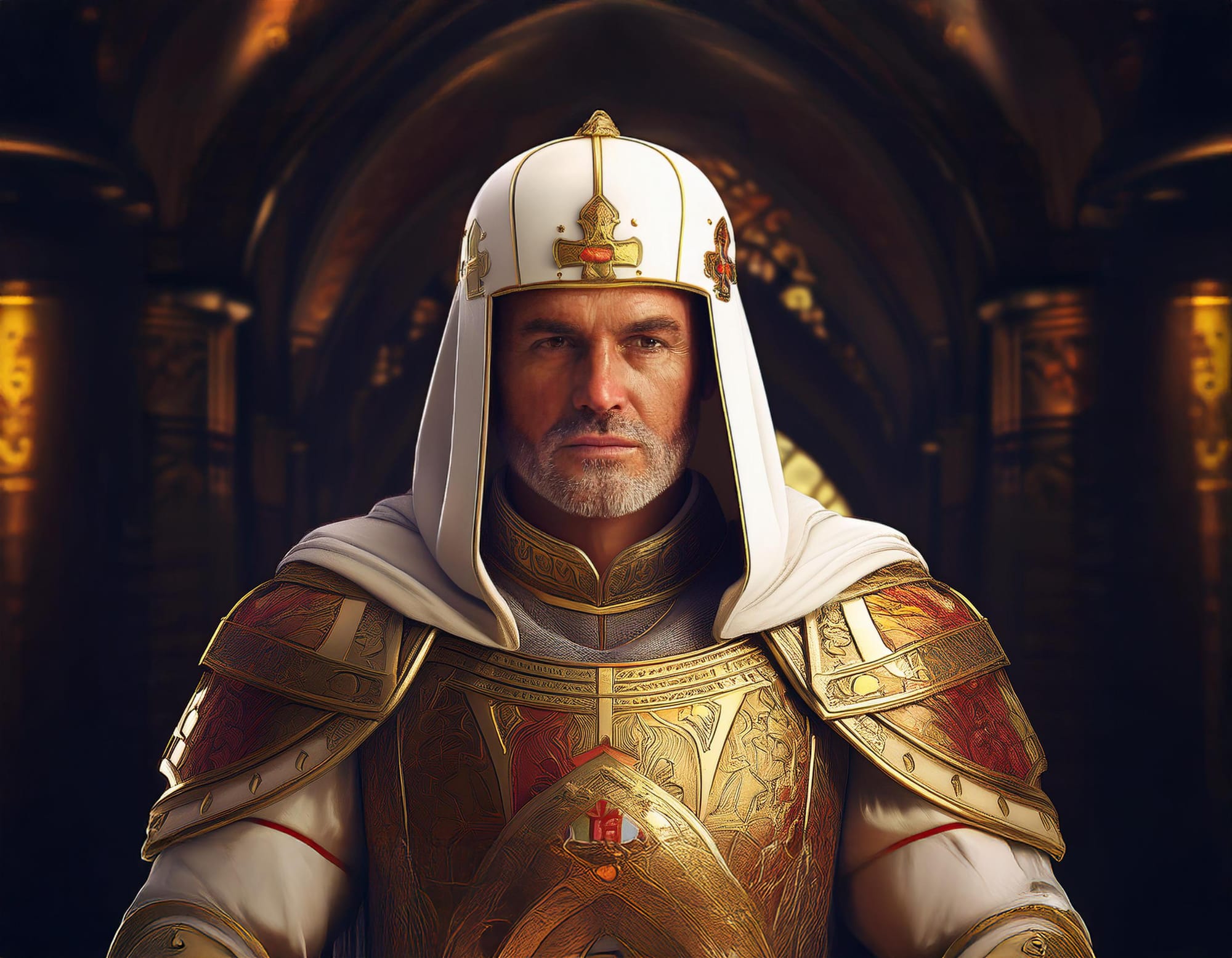100 Heroes: Pope Julius II
The gay man who became the Warrior Pope.

Pope Julius II (1443 – 1513) was head of the Roman Catholic Church and ruler of the Papal States from 1503 to his death in 1513.
Nicknamed the Warrior Pope or the Fearsome Pope, he chose his papal name not in honour of Pope Julius I but in emulation of Julius Caesar.
One of the most powerful and influential popes, Julius II was a central figure of the High Renaissance and left a significant mark in world history.
Becoming Pope
Julius II became Pope in the context of the Italian Wars, a period in which the major powers of Europe fought for primacy in the Italian peninsula.
Louis XII of France controlled the Duchy of Milan, previously held by the Sforza, and French influence had replaced that of the Medici in the Republic of Florence. The Kingdom of Naples was under Spanish rule, and the Borja family from Spain was a major political faction in the Papal States following the reign of Alexander VI.
The Archduke of Austria, Maximilian I, was hostile to France and Venice, and sought a presence in Italy in order to obtain the Papal coronation as Holy Roman Emperor.
The politics and and allegiances surrounding the papacy were complicated, and in order to be elected, Julius and his supporters made a range of agreements with the various factions.
However, once crowned, Julius appeared sufficiently emboldened to renege on many of those agreements. He proclaimed that his goal was to centralise the Papal States and "free Italy from the barbarians" - although there were numerous interpretations as to who he was referring to as barbarians in that context.
Early years as Pope
In his early years as Pope, Julius II removed the Borjas from power and exiled them to Spain. Cesare Borgia, Duke of Romagna, shared the same fate and lost his possessions.
In 1506, Julius II initiated the rebuilding of the St. Peter’s Basilica and established the renowned Swiss Guards for his personal protection.
Also in 1506, Julius ratified the Treaty of Tordesillas, establishing the first bishoprics in the Americas and beginning the catholicisation of Latin America. He also commanded a successful campaign in Romagna against the lords of Bologna and Perugia.
In 1508, Julius II commissioned the Raphael Rooms and Michelangelo’s paintings in the Sistine Chapel. He also joined an anti-Venetian league formed in Cambrai between France, Spain, and Austria, with the goal of capturing the coast of Romagna, including Rimini and Faenza, from the Venetian Republic.
After successfully securing the coast of Romagna, Julius formed an anti-French “Holy League” with Venice following the defeat of the latter at the Battle of Agnadello.
The barbarians
By this point, it was becoming clearer who Julius had in his sights as "the barbarians".
Strengthening his alliances with both Spain and the Habsburgs, Julius II personally led the Papal armed forces at the victorious Battle of Mirandola - defeating the French. Despite subsequent defeats and great losses at the Battle of Ravenna, Julius ultimately forced the French troops of Louis XII to retreat behind the Alps after the arrival of Swiss mercenaries from the Holy Roman Empire.
At the Congress of Mantua in 1512, Julius II presented himself as the “liberator of Italy”. At Julius’ orders, Italian families were restored to power in the vacuum of French power: the Imperial Swiss led by Massimiliano Sforza restored Sforza rule in Milan, and a Spanish army led by Giovanni de Medici restored Medici rule in Florence.
The Kingdom of Naples was recognised as a papal fief. The Venetians regained their territories lost to France, and the Papal States annexed Parma and Piacenza.
The conciliarist movement promoted by foreign monarchs was crushed, and Julius II affirmed ultramontanism at the Fifth Lateran Council.
A form of unification
The expulsion of the French is sometimes referred to as the moment in which Renaissance Italy came the closest to unification after the end of the Italic League of the 15th century.
However, it's not clear that unification of a single Italian kingdom was the goal that Julius was pursuing - his alliances required foreign powers to maintain a significant presence in key parts of the Italian peninsula.
But, by 1513, the strategy pursued by Julius had ensured that the Papacy had emerged as the main force in the Italian wars.
Personal life
It's widely documented that Julius II had sexual relationships with a number of men.
One of his lovers was Francesco Alidosi – one of his closest advisors.